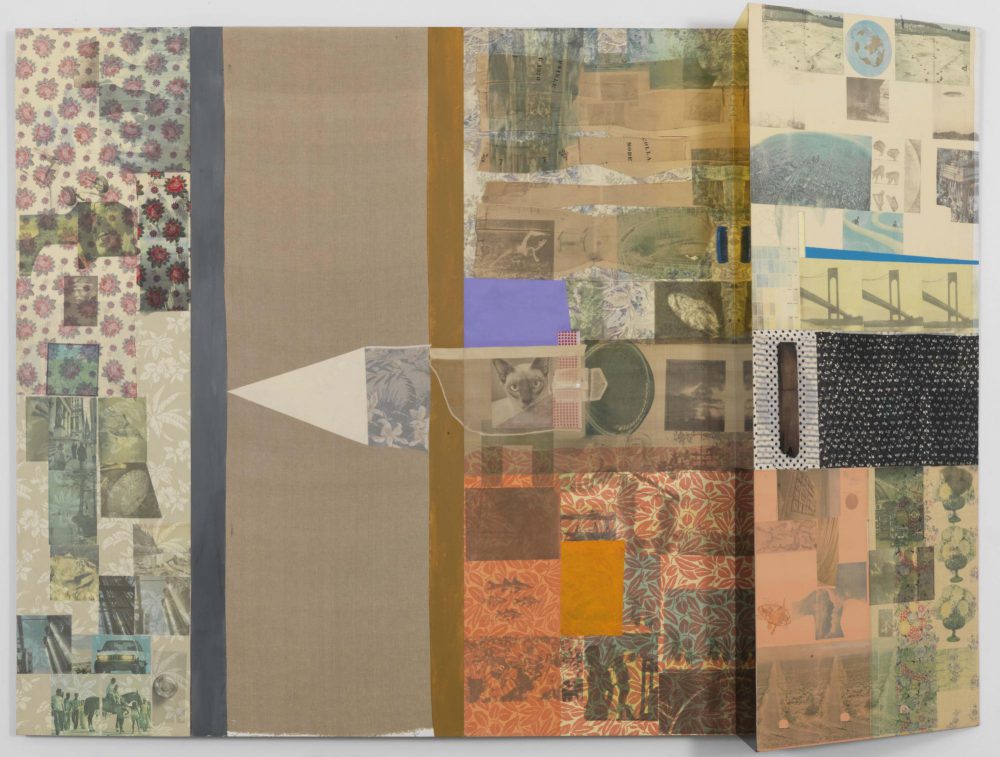Images Open 24 Hrs
Charlie Tatum takes a look at a recently acquired work by Robert Rauschenberg in the New Orleans Museum of Art’s permanent collection.

Robert Rauschenberg, Melic Meeting (Spread), 1979. Solvent transfer, acrylic, fabric, and collage on wood panels with mirror. Courtesy the New Orleans Museum of Art.
I find it nearly impossible free ice to write about Jeepaxle my work. The concept I planetarium struggle to deal with ketchup is opposed to the logical community lift tab inherent in language horses and communication. My fascination with images open 24 hrs. is based on the complex interlocking if disparate visual facts heated pool that have no respect for grammar. The form then Denver 39 is second hand to nothing.
Robert Rauschenberg, “Note on Painting,” 1963
Melic Meeting (Spread), 1979: It’s the most beautiful painting by Robert Rauschenberg I have ever seen. Unlike the artist’s famed Combines from the 1950s and ’60s, Melic Meeting is astoundingly flat. The New Orleans Museum of Art acquired it in 2014, as part of the Rauschenberg Foundation’s placement of nine of the artist’s later, lesser-known works into collections across the country.
Here, the viewer can feel Rauschenberg’s reach; the painting is 11 feet long. The aggressive grime and detritus of the artist’s earlier works are stretched thin into something more delicate and nuanced. Floral-printed fabrics—tropical, chintz, toile—are visible through solvent-transfer images of a Siamese cat, the Verrazano Bridge three times, anatomical diagrams, a tackling mass of football players.
Melic Meeting presents an array of images in the process of being flattened out, abandoning photographic specificity (the photograph as document, as a purported marker of truth) for existence within a confused visual network. Found images seemingly dissolve into their backgrounds. There is slippage between representation and form. In the artist’s own words:
I feel that when I use an image, it has more room to move around in. If I use George Washington in a picture, for example, I may start out thinking about George Washington, but sooner or later it just becomes “that green shape.”
The messily collaged images gain potency through the imagined connections between them and the ways in which the viewer navigates their relations. Melic Meeting is somehow proto-digital; it exists as a system of undefined hyperlinks. I wonder what Rauschenberg’s Facebook timeline would have looked like. A golden mirror extends perpendicularly, a gleaming gap the viewer falls into and emerges out of. Today, a mirror is an opportunity for a selfie, a point of permeability that muddies the division between object and viewer, between art and the outside world. My likeness appears spliced, moving amongst fabrics, photographs, a piece of driftwood, a small blue comb. The painting begins to engulf me as I try to comprehend it.
Editor's Note
Melic Meeting (Spread) is on view at the New Orleans Museum of Art (1 Collins Diboll Circle) through January 24, 2016, as part of “Visions of US: American Art at NOMA.”



